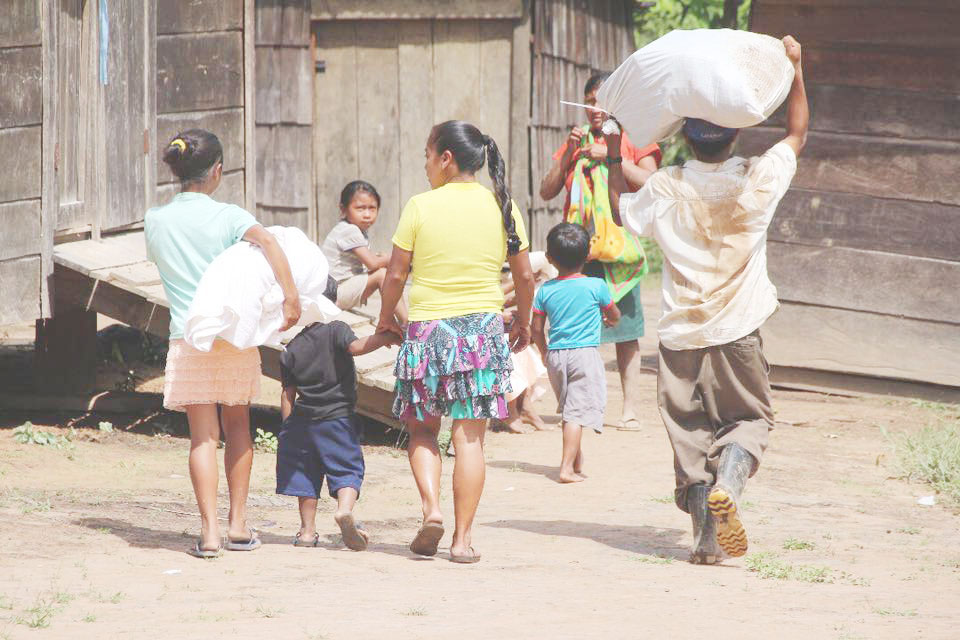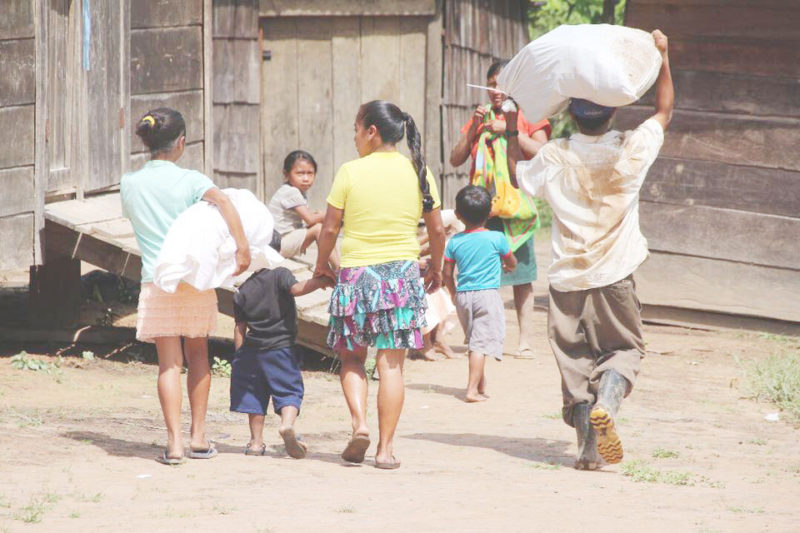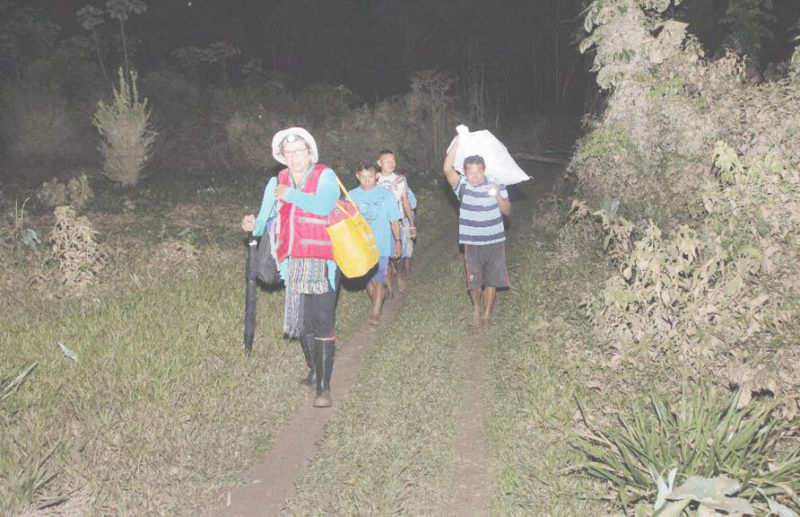Recent flashfloods have affected over 3,000 residents of Region Eight, where 266 farms and 56 houses were destroyed, the acting head of the Civil Defence Commission (CDC) announced yesterday.
“As we speak the water is receding; it is just the water in the Ireng River that remains high as a result of rainfall on Sunday and Monday,” Deputy Director of the CDC Major Kester Craig told a news conference yesterday, before making it clear that the river has not crested its banks as has been the case last week.
In the wake of excessive rainfall in the highland regions beginning last Wednesday, coupled with the cresting of the Ireng River, Kaibarupai, Waipa, Chenapau, Sand Hill Settlement, Itabac and Kanapang in Region Eight (Potaro-Siparuni), and Paruima, Kako, Jawalla, Phillipai, Kamarang and Quebanang in Region Seven (Cuyuni-Mazaruni) have been hit by flooding. The CDC has since extended its reach to several other communities in both Regions after receiving additional reports of flooding in other areas.
Craig yesterday explained that while data collected reveal that 3,274 residents in Region Eight have been affected, assessments continue to be carried out to assess the severity of the situation in Region Seven.
He said several residents in Kaibarupai were forced to evacuate and construct temporary shelter on higher ground. The Kaibarupai Health Post is flooded, while a school at Itabac has shifted and become unstable.
The school at Kanapang, he added, is also reportedly being used as temporary shelter.
Additionally, it was reported that the cassava crops planted by farmers have started to wilt, resulting in residents being advised to reap now to avoid a complete loss.
Stabroek News understands that a team of engineers from the Guyana Defence Force (GDF) has since been dispatched to conduct an assessment of roads and buildings affected and to formulate a plan to reconstruct the affected buildings.
Describing the relief response as one that garnered the support of many governmental and non-governmental agencies, Craig said the Guyana Water Incorporated will be sending in a team today to Orinduik and Kamarang to conduct water quality assessments and ensure that there is a water purification set up in every community.
The Ministry of Public Health is also expected to deploy additional personnel to provide medical supplies and assistance to other flood affected areas.
It was noted that the Minister within the Ministry of Indigenous Peoples’ Affairs Valerie GarridoLowe, who remains in Region Eight, has been able to visit all but two of the affected villages.
The ministry has since deployed its Principal Regional Development Officer Anil Roberts and Logistical and Communications expert Ovid Williams to lend support to the flood relief operations.
Commenting on the health situation in the region, Craig reiterated that although there were reported cases of diarrhoea in Chenapau, there have been no new cases or outbreak of any kind in the other villages.
‘Under control’
In terms of the impact on residents in Region Seven, reports received are that houses in Kako were flooded, resulting in 17 persons being displaced. They have, however, since returned. At Jawalla,
several houses were displaced, preventing approximately eight families from accessing their homes.
Meanwhile, all farms at Kako were affected as the water level there was recorded to be between six and 15 feet. Additionally, 80 farms have reportedly been affected in Quebanang and there are reports of increased mosquitos in the area.
Craig also said the CDC has received reports of flooding in Kamarang, Warawatta and Waramadong and the joint team in the region is conducting a damage assessment and needs analysis in this area. He further noted that no new information has been received on the height and impact of the flood in the Imbaimadai, Phillipai, Amokokopi, Quebanang and Paruima communities.
Nonetheless, Craig said the situation in Region Seven is under control with the help of the regional administration, which has officers who are trained in Disaster Risk Management. He also offered praise to the Region Seven Regional Disaster Risk Management System (RDRMS) and Regional Disaster Risk Management Committee (RDRMC), which Craig said were able to deploy staff immediately to the affected areas to do assessments.
“They have also started dispatching medical and cleaning supplies to Kamarang and will be conducting an air reconnaissance via drone as a means of better assessing the situation…we have since prepared 80 hampers, which will be taken into Region Seven sometime today,” he said.
It was noted that the CDC, since learning of the severity of the situation last Wednesday, has distributed over 327 relief food hampers and other supplies to the affected communities. This has seen the CDC spending a total of $7.2 million as of Monday evening.
The breakdown of this expenditure includes $4.1M in hampers, and $2.8M in flights. He said the figure, which did not include those flights which were done by the GDF, is expected to go up as the CDC was preparing hampers to be dispatched to Region Seven.
Craig further noted that the value of the donations from various entities, including corporate Guyana, is still being calculated.
Asked to give his take on the CDC’s appeal for public donations, Craig said while the CDC does not stockpile perishables, it supplied the majority of the hampers. However, there was need for more supplies and so the CDC sought them from donations.
Craig said the majority of the supplies continue to be deployed to the CDC’s Forward logistics centre at Orinduik, from where they are shuttled via boat or helicopter to the affected communities. Other relief supplies are transported from Kato to Chiung and from Mahdia to Kopinang. “Yesterday, two planeloads of supplies were distributed to Kopinang via a direct flight from Georgetown and another flight heading in from Orinduik… With Kako scheduled to receive supplies via Orinduik yesterday, the CDC would have successfully completed the deployment of supplies to all of the affected in Region Eight,” he noted.
Asked to respond to criticism about a slow initial response to the flooding, Craig emphasized the importance of conducting impact assessments not only to prioritize areas based on severity of impact but also to maximize the use of resources.












